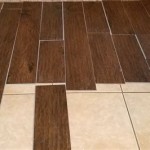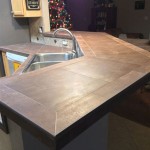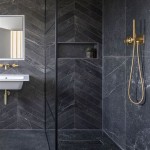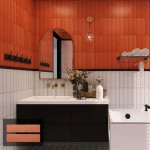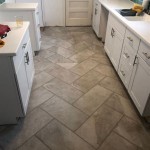Creating An Inviting Atmosphere With Tile Flooring Ideas
Tile flooring offers a versatile and durable solution for creating inviting atmospheres in a variety of spaces. From kitchens and bathrooms to living rooms and entryways, the right tile choice can significantly enhance the aesthetic appeal and functionality of a home or business. The selection of tile goes beyond merely covering a surface; it involves understanding the nuances of color, texture, pattern, and material to achieve a specific desired effect. This article explores various tile flooring ideas to assist in creating an inviting environment, focusing on practical considerations and design principles.
The goal of inviting spaces is to foster a sense of comfort and welcome. This is achieved by using color and texture to create visually appealing surfaces. The type of material is also extremely important so that the tile is long lasting and easy to clean. Tile flooring, because of its versatility, provides numerous avenues for achieving this, allowing for customization based on individual preferences and the overall architectural style of the space.
Understanding the Impact of Tile Color and Pattern
Color plays a critical role in shaping the perception of a room. Light-colored tiles, such as whites, creams, and light grays, can brighten a space and create an illusion of more openness. These colors reflect light effectively, making them ideal for smaller rooms or areas with limited natural light. Light hues often evoke a sense of cleanliness and airiness, contributing to a calming and inviting atmosphere.
Conversely, darker tiles like blacks, browns, and deep grays can add a touch of sophistication and drama to a room. They provide a sense of grounding and stability. However, it's essential to use dark tiles judiciously, especially in smaller spaces, as they can absorb light and make the room feel smaller and more enclosed. When incorporating darker tiles, consider balancing them with lighter elements in the surrounding décor to maintain a sense of balance and prevent the space from feeling oppressive.
Tile patterns can also significantly impact the visual appeal of a space. Simple patterns, such as a classic grid layout, offer a clean and timeless look. Other layouts, such as herringbone, chevron, or staggered patterns, can add visual interest and a touch of sophistication. The choice of pattern should complement the overall design style of the room. For example, a herringbone pattern might be well-suited for a more traditional or transitional space, while a geometric pattern could be a better fit for a modern or contemporary design.
Large-format tiles, which are increasingly popular, can minimize grout lines, creating a seamless and expansive look. This can be particularly effective in smaller spaces, as fewer grout lines contribute to a cleaner and less cluttered appearance. In larger rooms, large-format tiles can create a sense of grandeur and sophistication. The material choice for grout color can either blend seamlessly for an easy to clean look or contrast the tile to create interest and visual pattern.
Smaller tiles, such as mosaics or penny tiles, can be used to create intricate patterns and add texture to a space. These are often used in bathrooms or as accent features in other rooms. Mosaic tiles can be particularly effective in adding a pop of color or a touch of whimsy to an otherwise neutral space. A mosaic tile can also create a focal point.
Choosing the Right Tile Material for Function and Aesthetics
The material of the tile is a crucial consideration, impacting both its durability and aesthetic appeal. Porcelain tiles are a popular choice due to their strength, water resistance, and versatility. They are suitable for high-traffic areas and can be used both indoors and outdoors. Porcelain tiles are available in a wide range of colors, patterns, and finishes, making them a versatile option for various design styles.
Ceramic tiles are another common choice, known for their affordability and ease of maintenance. While not as durable as porcelain tiles, they are suitable for areas with moderate foot traffic, such as bathrooms or kitchens. Ceramic tiles are also available in a wide variety of colors and patterns. The type of glazing on the ceramic tile affects its resistance to foot traffic and staining. Certain glazes are more delicate than others.
Natural stone tiles, such as marble, granite, and slate, offer a luxurious and timeless look. These materials are known for their unique veining and variations in color, adding a touch of character and sophistication to any space. Natural stone tiles require more maintenance than porcelain or ceramic tiles, including regular sealing to protect them from stains and water damage. However, the natural beauty and elegance of natural stone can be well worth the extra effort.
Vinyl tiles, particularly luxury vinyl tile (LVT), are a cost-effective and durable option that mimics the look of wood or stone. LVT is water-resistant and easy to maintain, making it a practical choice for kitchens, bathrooms, and other areas prone to moisture. LVT is also softer underfoot than porcelain or ceramic tiles, providing a more comfortable walking surface. With advancements in printing technology, LVT can now convincingly replicate the look of natural materials, offering a budget-friendly alternative without sacrificing aesthetic appeal.
Glass tiles can add a unique and contemporary touch to a space. They are often used in backsplashes, accent walls, or as decorative elements in bathrooms or kitchens. Glass tiles reflect light beautifully, creating a bright and airy atmosphere. They are also non-porous and easy to clean, making them a practical choice for areas prone to moisture.
The texture of the tile can enhance the tactile experience of a space. Smooth tiles offer a sleek and modern look, while textured tiles can add depth and visual interest. Textured tiles can also provide better slip resistance, making them a safer choice for bathrooms and other areas where water is present.
Integrating Tile Flooring with Other Design Elements
Tile flooring should be seamlessly integrated with other design elements in the room, such as wall colors, furniture, and accessories, to create a cohesive and harmonious look. The choice of tile should complement the overall color palette and style of the space.
Consider the lighting in the room when selecting tile flooring. Darker tiles can absorb light, making a room feel smaller and more enclosed. Lighter tiles can brighten a space and create an illusion of more openness. Natural light can enhance the beauty of natural stone tiles, while artificial light can highlight the sheen of glass tiles.
The choice of grout color can also impact the overall look of the tile flooring. Matching grout to the tile color can create a seamless and understated look, while contrasting grout can add visual interest and highlight the pattern of the tiles. Dark colored grout can hide stains more easily. The material of the grout is also important because some grout types are more resistant to mold and mildew than others.
Rugs can be used to add warmth and comfort to tile flooring, especially in colder climates. Area rugs can also define different zones within a larger space, such as a living room or dining room. The color, pattern, and texture of the rug should complement the tile flooring and the overall design style of the room.
Consider the functionality of the space when selecting tile flooring. In high-traffic areas, such as entryways or hallways, choose durable and slip-resistant tiles. In bathrooms, choose water-resistant tiles that are easy to clean. In kitchens, choose tiles that are resistant to stains and spills. Different tiles are more suited for different applications so this should be considered well before starting the design process.
Underfloor heating can be installed beneath tile flooring to provide added warmth and comfort, especially in colder climates. This can make tile flooring a more appealing choice for living rooms, bedrooms, and other areas where warmth is desired. Underfloor heating is often a more efficient way to heat a room compared to traditional radiator heating.
The use of transitions between different flooring materials can create visual interest and define different spaces within a home. For example, transitioning from tile flooring in a kitchen to hardwood flooring in a living room can create a distinct separation between the two areas. Proper transitions can also prevent tripping hazards and protect the edges of the flooring materials.
Tile flooring offers a vast array of design possibilities, allowing for the creation of inviting and aesthetically pleasing spaces. By carefully considering the color, pattern, material, and integration with other design elements, it is possible to transform any room into a welcoming and comfortable environment.

26 Entryway Tile Ideas Stylish Designs For Hallways

Flooring Ideas 8 Stylish Ways To Bring Your Floors Life

7 Latest Ceramic Tile Flooring Ideas In 2024 Designcafe

Concrete Look Tiles The Perfect Blend Of Durability And Aesthetic

17 Best Kitchen Floor Tile Ideas 2024 Small

15 Awesome Floor And Deco Ideas Installation Sigmadoors

Best Flooring For Your Entryway Next Day Floors

15 Awesome Floor And Deco Ideas Installation Sigmadoors

Mudroom Tile Ideas Design Options For The Best Floor Arinsolangeathome

Office Flooring Ideas Guide To Selecting The Best Materials Lx Hausys
Related Posts


